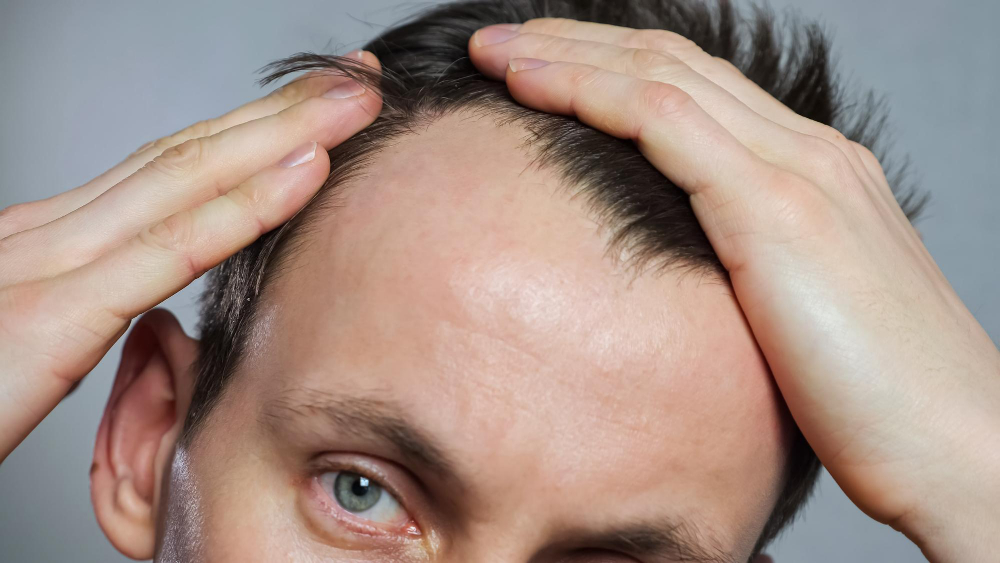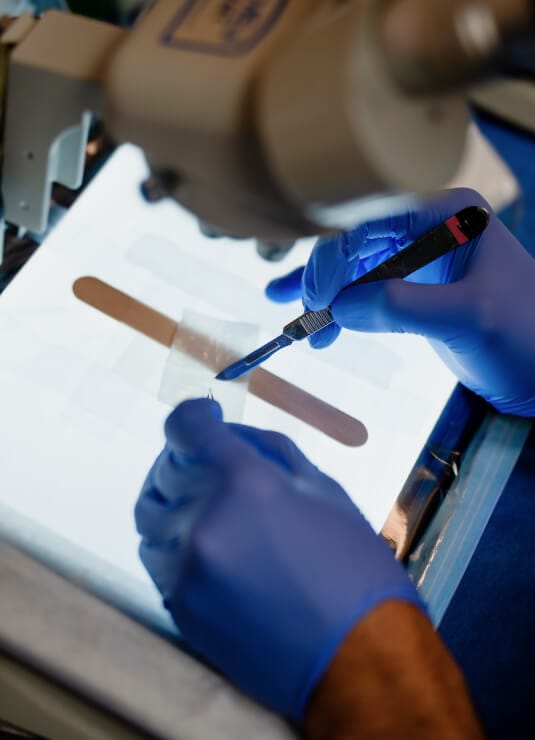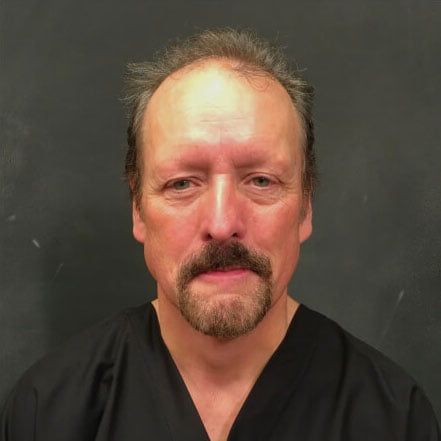
Forehead Reduction Surgery
Do you often choose hairstyles that conceal your forehead? Have you avoided tying your hair back or felt self-conscious about how exposed your features appear with certain looks? These are common experiences for individuals with a high or prominent forehead. Here, forehead reduction surgery can help. It is designed to lower the hairline and create a more balanced facial appearance. ¹ At Hair Restoration, led by Dr. Javad Sajan, this procedure is performed using advanced techniques to provide natural-looking, proportional results tailored to each patient’s goals.
What Is a Forehead Reduction?
Forehead reduction, also called hairline lowering or forehead shortening, is a surgical procedure that reduces the vertical height of the forehead by repositioning the natural hairline. The goal of the procedure is to improve facial proportions by shortening the distance between the hairline and the eyebrows.¹ This adjustment creates a more balanced appearance and is often recommended for individuals who feel their forehead appears too long or prominent.
Forehead reduction surgery is frequently performed for both female and male patients seeking hairline lowering, facial feminization, or aesthetic refinement.² In some cases, it is combined with a brow lift or contouring to enhance symmetry and overall facial harmony.
Am I a Good Candidate for Hairline-Lowering Surgery?
Hairline-lowering surgery may be recommended for patients who are concerned about a high or disproportionately long forehead. Ideal candidates typically have adequate scalp laxity, which allows the hair-bearing portion of the scalp to be advanced without tension. ³
This procedure may be right if you have:
- A naturally high hairline with no significant hair loss
- A desire to shorten the vertical height of the forehead for facial balance
- Part of a facial feminization plan or gender-affirming surgical process
- Previous hairline recession with stable hair density behind the hairline
- No history of poor wound healing, excessive scarring, or active scalp conditions
Patients considering hairline advancement should be in good overall health and have realistic expectations regarding scarring, hair density, and long-term outcomes.


How is Forehead Reduction Performed?
Forehead reduction surgery involves a series of precise surgical steps designed to shorten the vertical height of the forehead by advancing the natural hairline. The treatment is typically performed on an outpatient basis under general anesthesia.
- Preoperative planning and hairline design: Before surgery, the provider marks the planned hairline based on individual facial proportions, scalp flexibility, and overall aesthetic goals. The new hairline is customized to achieve a natural contour and balanced result.
- Incision placement: An incision is made just along or slightly behind the natural hairline. This technique allows hair to eventually grow through the incision line, helping to conceal the scar and maintain a natural appearance.
- Scalp mobilization and advancement: The scalp is gently separated from the underlying tissue and advanced toward the newly marked hairline. The achievable reduction depends on how much the scalp can be repositioned without tension.³
- Excessive forehead skin is removed: Once the hairline has been brought forward, the excess hair-bearing forehead skin is removed. This step reduces the visible length of the forehead and finalizes the new contour.
- Layered incision closure: The incision is closed in multiple layers using fine sutures to promote smooth healing and minimize scar visibility. Sutures along the hairline are placed to support optimal regrowth of hair through the incision site.
The procedure is typically completed in two to three hours, and patients are able to return home the same day with detailed postoperative instructions. ⁴
What Will My Recovery Process Be Like?
Recovery following forehead reduction surgery is generally well tolerated. Below is the recovery process:
- Early downtime (Days 1-3): Mild swelling and bruising peak during the first 48 hours and begin to subside with head elevation, cold compresses, and prescribed medication. Light walking around the house is encouraged to promote circulation.
- Suture care (Days 4-7): Fine sutures along the hairline are casually removed at the first post-operative visit. Most patients can resume gentle hair washing once the incision is stable.
- Back to routine (Week 1-2): You can resume desk work and other non-high intensity workouts typically within 7 to 10 days. However, visible signs of healing may still be present.
- Activity restrictions (Weeks 2-4): Heavy lifting, vigorous exercise, and direct sun exposure should be avoided to protect the incision and minimize swelling.
- Sensory changes (Weeks 2-8): Temporary numbness or tightness near the hairline is common and gradually resolves as nerve endings recover.
- Scar maturation (Months 2-6): Hair begins to grow through the incision, helping to conceal the scar. The incision line continues to fade and flatten over several months. ⁴
Recovery is generally well tolerated, with gradual improvement in comfort and appearance each week. Dr. Sajan and the care team at Hair Restoration Seattle will provide detailed aftercare instructions and schedule follow-ups to monitor healing.
How Much Does a Hairline Lowering Cost in Seattle?
The price of forehead reduction in Seattle starts from $8,995, but the final cost depends on several variables such as the degree of hairline advancement planned, scalp flexibility, hair density, and anesthesia. Flexible financing plans are available through our lending partners, so you can enquire about monthly payment options during your consultation and select a plan that works best for your budget.
Schedule a Hairline Lowering Consultation
Take a step forward towards a lower, natural-looking hairline with a personal consultation at Hair Restoration Seattle. During this visit, the team will review goals and provide a detailed treatment plan with the cost estimate and financing options. To schedule an appointment, call (206) 209-0988 or fill out the online form.
Frequently Asked Questions
Q: How much does it cost to reduce forehead surgery?
Forehead reduction surgery typically costs between $7,000 and $15,000. The final price depends on several factors, including the surgeon’s expertise, the complexity of the procedure, geographic location, and whether any additional procedures are performed at the same time.
Q: How painful is forehead reduction surgery?
Q: Is forehead reduction surgery safe?
Yes, forehead reduction surgery is considered safe when performed by a qualified plastic surgeon, but like any surgery, it carries some risks. Potential complications include temporary or permanent numbness near the incision site, scarring, or nerve damage that may affect eyebrow movement. However, serious complications are uncommon, and most side effects are temporary. 1
Q: What is the best age for forehead reduction?
Q: Can I lower my hairline?

References:
- Berenguer B, García T, Lorca-García C, San-Basilio M. Aesthetic forehead reduction in female patients: surgical details and analysis of outcome. J Plast Reconstr Aesthet Surg. 2022;75(1):407-414. doi:10.1016/j.bjps.2021.06.002. PMID: 34305024.
- Ives GC, Martin A, Munabi NCO, et al. Temporal rotation flaps for gender-affirming hairline feminization: taking the “M” shape out of masculine hairlines. J Plast Reconstr Aesthet Surg. 2025;102:404-411. doi:10.1016/j.bjps.2025.01.054. PMID: 39983248.
- Epstein J, Kuka Epstein G. Hairline-lowering surgery. Facial Plast Surg Clin North Am. 2020;28(2):197-203. doi:10.1016/j.fsc.2020.01.002. PMID: 32312507.
- Lee SH, Oh YH, Youn S, Lee JS. Forehead reduction surgery via an anterior hairline pretrichial incision in Asians: a review of 641 cases. Aesthetic Plast Surg. 2021;45(4):1551-1560. doi:10.1007/s00266-020-02103-4. PMID: 33683382.
- Seyednejad H, Pourdanesh F, Sazgar AA. Forehead reduction: A systematic review and meta-analysis of outcomes. Facial Plast Surg Aesthet Med. 2021;23(4):241-248. doi:10.1089/fpsam.2020.0474

